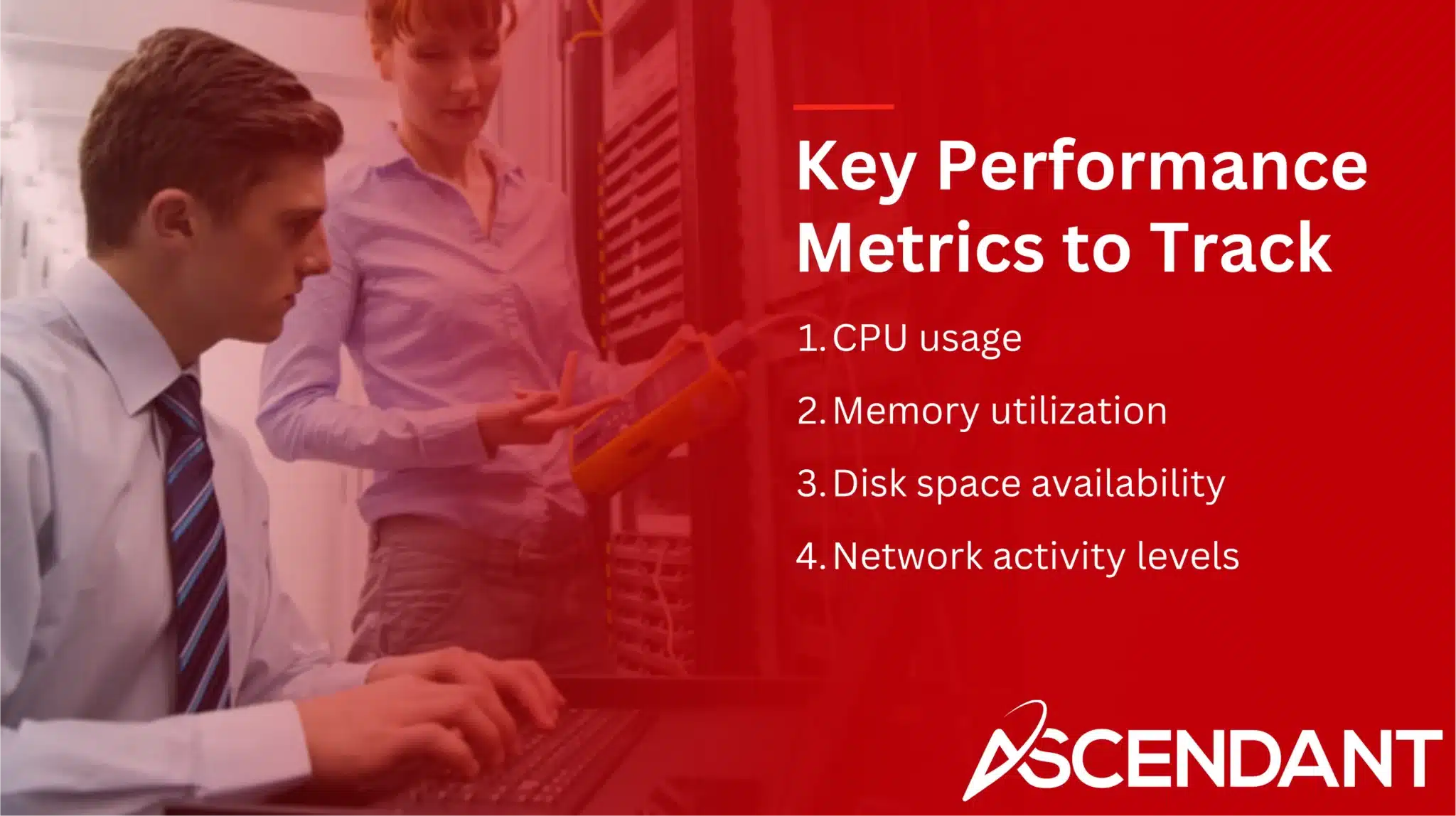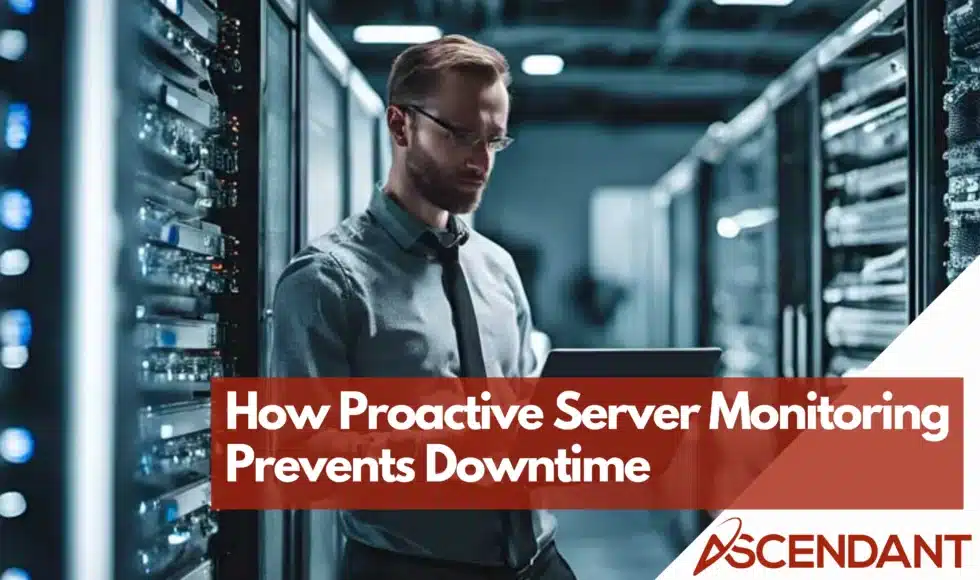How does proactive server monitoring prevent downtime? By continuously tracking server health and performance, it identifies issues early, allowing for quick resolution before they cause outages. This article explains how proactive server monitoring prevents downtime and the role it plays in ensuring uninterrupted business operations.
In This Article:
- The Impact of Unexpected Downtime
- The Mechanics of Proactive Server Monitoring
- Key Performance Metrics to Track
- Early Detection and Automated Responses
- Real-Time Monitoring for Optimal Performance
- Preventing Hardware Failures
- Enhancing Security Monitoring
- Optimizing Resource Allocation
- Proactive Maintenance Strategies
- Case Study: Successful Implementation of Proactive Monitoring
Key Takeaways
- Unexpected downtime can result in significant financial losses and damage customer trust, making proactive server monitoring essential for business continuity.
- Proactive server monitoring involves real-time tracking of key performance metrics and early detection of issues, allowing for prompt intervention to prevent system failures.
- Implementing proactive maintenance strategies and optimizing resource allocation can enhance server reliability, reduce operational costs, and ensure uninterrupted service.
The Impact of Unexpected Downtime
Experiencing unexpected downtime is not merely an inconvenience. It leads to severe financial consequences for businesses. Annual losses incurred by Fortune Global 500 companies due to downtime can reach a staggering $1.5 trillion, underlining the gravity of its fiscal impact. Such costs encompass both direct financial hits from operations coming to a standstill and indirect expenses like overtime compensation and efforts made towards recovery.
To cause significant monetary damage, the occurrence of downtime undermines customer confidence in a company’s reliability. Customers experiencing system unavailability may switch their allegiance to rival firms, with potential long-term adverse effects on client fidelity and detrimentally affecting the business’s reputation. The trust erosion is often exacerbated by operational setbacks such as transaction delays or cancellations that escalate revenue loss.
The repercussions of downtime are far-reaching: they halt productivity, lead to data compromise, and open doors for cybersecurity threats. Given that every hour down could equate thousands lost in earnings, engaging in proactive monitoring becomes indispensable for curtailing interruptions while bolstering business continuity plans—ultimately reducing occurrences of unplanned outages.
To safeguard against unexpected downtimes’ detrimental implications on continuing operations smoothly—and ensuring services are swiftly re-established when interrupted—is vital for preserving enterprise fluidity and avoiding extra expenditure related issues along with forfeited chances necessary for keeping competitive advantage within one’s industry.
The Mechanics of Proactive Server Monitoring
Proactive monitoring of servers is a comprehensive strategy aimed at consistently tracking and maintaining server performance and health. By gathering real-time data from various system components, it offers an accurate, all-encompassing perspective on the server’s status. This approach enables organizations to preemptively tackle issues before they amplify into more significant concerns, thus bolstering overall system dependability.
An essential feature of proactive monitoring involves the implementation of automated alerts that are activated when key performance metrics deviate from established norms. These early warnings allow for swift action to be taken, helping prevent expensive emergency repairs down the line. Integrating machine learning and artificial intelligence technologies enhances this method by detecting patterns that might indicate impending problems—allowing for timely responses that assure maintained optimal functioning and consistent availability.
Proactive monitoring must also be scalable in nature. It should evolve alongside a growing business without causing constraints due to its own limitations. With uninterrupted real-time surveillance ensuring steady operational health, such continuous scrutiny serves as assurance against disruptions in service delivery—providing customers with reliable access free from interruptions or downtime.
Key Performance Metrics to Track

Keeping a close eye on essential performance metrics is critical to maintaining server efficiency and averting resource-related malfunctions. These vital indicators of server performance include:
- CPU usage
- Memory utilization
- Disk space availability
- Network activity levels
The proportion of processing capacity in use, denoted by CPU usage, reflects the current computational demand. Persistent high values could precipitate lags or even crashes due to overburdening the system. Concurrently, it’s imperative to track memory consumption continuously for early detection of leaks and similar complications that slow down operations.
Monitoring available disk space is no less significant because scarcity thereof may trigger serious consequences including data loss and full-blown system shutdowns. Observing network activity completes the suite of crucial checks, pinpointing potential issues slowing down transmission rates which are key to optimal server functioning—a monitoring tool can play an instrumental role here.
By diligently tracking these core metrics—CPU load, memory allocation status, remaining disk storage capacity and network throughput—not only do businesses protect their servers against disruption, but also secure uninterrupted service delivery at maximum operational capability.
Early Detection and Automated Responses
Maintaining uninterrupted operation of servers is essential for preserving business operations and preventing interruptions. Tools designed for proactive monitoring serve an important role by sending alerts to IT personnel when they detect irregularities, thereby facilitating rapid intervention before issues become more severe. Monitoring metrics such as HTTP 5xx error rates is useful not only in identifying server malfunctions that affect end-user experience but also in exposing potential software bugs.
The provision of real-time alerts is indispensable. With immediate notifications at their disposal, IT staff can remediate problems swiftly, ensuring a seamless service delivery and reducing any negative repercussions on business activities. For instance, receiving automated notifications related to low disk space enables teams to take corrective actions before system failures lead to significant downtime.
Enhancing these monitoring tools with predictive analytics and artificial intelligence amplifies their ability to reveal early warning signs and spot unusual patterns proactively. This forward-thinking strategy promotes the prompt detection of declines in server performance while enabling systems to autonomously intervene rapidly—upholding peak operational efficiency for servers and steering clear of unnecessary service disruptions.
Real-Time Monitoring for Optimal Performance
By implementing real-time monitoring, servers are maintained at peak efficiency through:
- Persistent observation of vital metrics to deliver swift and continuous service
- Enhancing the end-user experience
- Preemptively recognizing and responding to usage trends
- Provisioning supplementary capacity as necessary
- Refining query execution to prevent delays, disruptions, or system failures.
Real-time alerts play an essential role in this framework. They enable faster reaction times for handling incidents, thus reducing their possible effects on business functionality. For instance, if a server experiences an unforeseen surge in load, real-time monitoring can notify the IT team so they may adjust resources or fine-tune performance accordingly to manage the heightened workload while offering immediate insights.
The practice of ongoing monitoring ensures that operations proceed without interruption by swiftly detecting and resolving any issues causing diminished performance. This vigilant strategy reduces periods of downtime and maintains consistent operation at optimum levels.
Preventing Hardware Failures
Maintaining business continuity necessitates the prevention of hardware failures. By proactively monitoring metrics such as CPU temperature, one can avoid overheating and subsequent hardware breakdowns. Ensuring a constant power supply with stable voltage levels is also crucial to averting unexpected system shutdowns.
It’s essential to regularly check fan speeds to ensure adequate cooling and prevent overheating of components. Keeping an eye on disk I/O performance helps pinpoint any inefficiencies in data transfer processes, ensuring smooth server operations.
Employing proactive measures for monitoring the health of your IT infrastructure significantly reduces the likelihood of unforeseen outages and sidesteps costly emergency repairs. Such vigilance guarantees that systems function at their peak, thereby upholding a solid technological foundation critical for uninterrupted business operations.
Enhancing Security Monitoring
It’s crucial to bolster security monitoring in order to safeguard sensitive data and prevent security breaches. Utilizing behavioral analysis is key for identifying irregular patterns that may precipitate server interruptions, such as unexpected spikes in traffic hinting at potential threats.
Detecting aberrant login attempts promptly allows for swift countermeasures against such incursions. Robust server monitoring tools must encompass features like role-based access management, encryption for data safety, and comprehensive audit trails to solidify data protection.
Persistently keeping an eye out for security dangers through continuous monitoring curbs cybersecurity risks and upholds the integrity of IT systems. This forward-thinking strategy ensures uninterrupted business operations by minimizing downtime resulting from any security issues.
Optimizing Resource Allocation
Maintaining server efficiency and reducing costs is paramount, which necessitates the effective management of resources. This involves scrutinizing and refining processes that may be using an excessive amount of CPU, memory, or disk space. By gaining a clear understanding of real network utilization, companies can steer clear of unwarranted expenses while also capturing potential cost reductions.
By engaging in continuous monitoring to observe actual resource use patterns and appropriately adjusting allocations as needed, businesses can enhance their operations. Evaluating network latency helps pinpoint issues that could impede data transfer rates. The adoption of caching techniques along with load balancing measures serves to lessen the strain on servers while speeding up access to data.
Conducting periodic evaluations and tweaking vital settings on servers like timeout durations and maximum connection counts contribute significantly to heightened overall effectiveness. Making informed decisions about reallocating resources grounded in these assessments leads to amplified efficiency levels. It curtails downtime periods whilst sustaining optimal server performance conditions.
Proactive Maintenance Strategies
Engaging in proactive maintenance is essential for preempting possible complications and maintaining the uninterrupted operation of a business. By employing continuous monitoring, real-time irregularities are recognized, allowing software concerns to be addressed proactively before they result in system unavailability. This method guarantees that issues are pinpointed and dealt with prior to any significant impact.
Scheduled regular upkeep combined with strategic plans help reduce instances of downtime while warding off unexpected disruptions. The persistent oversight and servicing of IT infrastructure keep systems primed to confront potential difficulties effectively.
By embracing preventative maintenance strategies, businesses can assure sustained accessibility, stave off operational interruptions, and ensure their operations proceed without hitches through diligent preservation efforts.
Case Study: Successful Implementation of Proactive Monitoring
To exemplify the advantages of proactive monitoring, consider an e-commerce marketplace that saw a 78% reduction in downtime after implementing Proso’s proactive monitoring system. This substantial decrease underscores how effective such systems can be at preventing unexpected interruptions and upholding business continuity.
In another instance, a SaaS startup managed to achieve complete observability with Proso within a mere 10 days. This demonstrates not only the swift deployment of proactive monitoring solutions, but also their immediate impact on enhancing system dependability and functionality.
Both scenarios emphasize the critical role played by proactive monitoring in keeping businesses running smoothly. By minimizing disruptions, these tools play an essential part in fostering company growth.
Summary
Proactive server monitoring is a powerful tool that helps businesses prevent downtime, optimize performance, and maintain business continuity. By continuously monitoring key performance metrics and implementing automated alerts, businesses can identify and address issues before they escalate into critical problems. This proactive approach not only minimizes downtime, but also enhances security and optimizes resource allocation.
By implementing proactive maintenance strategies and leveraging real-time monitoring tools, businesses can ensure that their IT systems are always running smoothly and efficiently. This guide has provided a comprehensive overview of the benefits and implementation of proactive server monitoring, demonstrating its critical role in maintaining a stable and reliable IT infrastructure.
 Frequently Asked Questions
Frequently Asked Questions
How does proactive server monitoring help in preventing downtime?
By actively monitoring servers, businesses can prevent downtime through early detection of potential problems and addressing them before they develop into major system failures.
The ongoing process of monitoring coupled with immediate alerts is crucial for sustaining the dependability of a system.
What are the key performance metrics to track in server monitoring?
The key performance metrics to track in server monitoring are CPU usage, memory utilization, disk space, and network activity. Monitoring these metrics is crucial for maintaining optimal server performance and preventing downtime.
How does real-time monitoring enhance server performance?
By employing real-time monitoring, server performance is significantly improved due to the capability of instantly sending alerts and allowing for swift reactions to issues. This results in continuous service and lessens any adverse effects on business activities.
What role does proactive maintenance play in server monitoring?
Regular checks are essential in server monitoring for proactive maintenance, as they help to detect and fix problems before they can lead to significant downtime. This ensures that the performance of servers is maintained at its best.
By adopting this strategy, reliability is improved, and the likelihood of unforeseen breakdowns is diminished.
Can proactive monitoring be implemented quickly?
Some organizations have successfully implemented proactive monitoring and achieved full observability in a mere 10 days, underscoring the swift benefits it provides.

